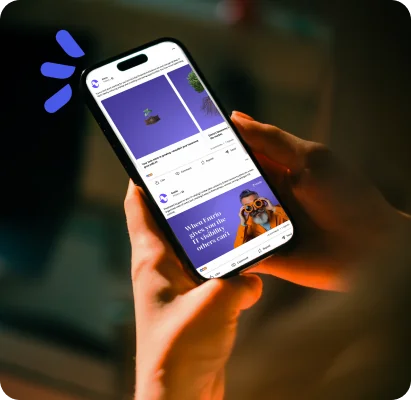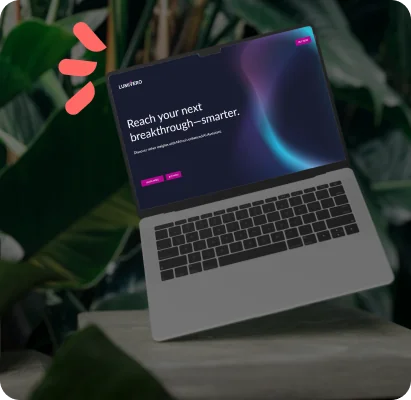
Sending campaign emails is a great way to attract and convert leads—unless they never land in the inbox.
If your emails are vanishing into the void (or worse, spam), don’t panic. We’re breaking down the 5 biggest reasons your campaigns have email deliverability issues—and how to fix them fast.
The culprits
Before we dive in, know this: if your emails aren’t getting delivered, it usually comes down to one (or more) of the following:
- Sources: Where your contacts came from. Think: ads, social posts, search engines, email signups, etc.
- Permissions: What your contacts have actually agreed to. Did they opt in, opt out, or... never say anything?
- Expectations: What your contacts think you’re going to send them..
With that in mind, let’s get into the top reasons your emails might be missing the inbox—and what you can do about it.
1. The contact source is a “purchased email list.”
Where did your contacts come from? The source says a lot about whether your emails will actually get delivered.
If you're working off a purchased list, expect issues. No matter how much you paid—or how “reputable” the vendor was—those lists are often riddled with bad or unmailable addresses.
Instead, focus on growing your list organically. That means pulling in contacts from legit sources like:
- Organic and paid search
- Referrals
- Social media (paid and organic)
- Email signups
- Direct traffic
If you know where your contacts came from, you’ll know whether your emails stand a chance of reaching them.
2. You didn’t have permission to email them
Permission isn’t just polite—it’s the backbone of deliverability.
When you email people who haven’t opted in, you’re asking for trouble: bounces, unsubscribes, temporary failures, and yep—spam reports (yikes!). Especially if that list was purchased.
And it’s not just purchased lists that cause problems. Scraping emails from LinkedIn or using tools like Norbert might get you contact info, but that doesn’t mean you’ve earned the right to hit “send.”
If you’re not building your list organically yet, start. Seriously. But if your team insists on emailing cold contacts (not recommended!), do it smart:
- Skip the big blasts
- Send personalized emails, one-to-one
- Build and use buyer personas
- Tailor your message like you actually know the person (because soon enough, you might)
No one likes a surprise email—unless it’s from Beyoncé. And you are not Beyoncé.
3. Recipients weren’t expecting an email
Before sending any email campaign, make sure your contacts are expecting it. Even inbound contacts—those who come to you, want to connect, and opt in—will unsubscribe if you send something they didn’t sign up for.
Here’s what that looks like:
Joe opts in to a monthly newsletter from Company X. You’ve set the expectation—one email, once a month. But then you send Joe an extra promo email about a new service he didn’t ask for. Joe’s confused, maybe a little annoyed—and just like that, he’s unsubscribed from everything, even the content he liked.
Avoid this by giving people options. Let them choose what kind of emails they want when they sign up. Product updates? Event invites? Monthly tips? Cool. Let them tick the boxes. That way, you’re sending emails they actually expect—and want to open.
Keep it predictable. Keep it wanted. Keep Joe happy.
4. You have a bad email address.
Email marketing lists don’t age well. HubSpot reports that they degrade by about 22.5% every year—and it makes sense. People change jobs, abandon old accounts (like Outlook and Gmail), or just stop checking certain inboxes altogether. If you’re not staying on top of your contacts, a chunk of your list is likely going nowhere.
Keep your list healthy with regular CRM cleanups. Update outdated addresses when you can, and remove ones that keep bouncing. Tools like Norbert can help you hunt down fresh contact info—but don’t stop there.
Keep building. Forms are your best friend when it comes to organic list growth. Use them to gate valuable content or grow your newsletter audience. When someone fills out a form, you’re not just getting their email—you’re getting a good one, directly from them.
See the example from HubSpot below:
Another great way to use forms is to grow your monthly newsletter list, ensuring you're collecting valid email addresses from contacts who actually want to hear from you.
5. Uh-oh… you’ve been marked as spam.
Getting marked as spam on occasion (read: VERY infrequently) won’t ruin your deliverability. However, when spam complaints are frequent, or when you get too many complaints about your campaign emails, it will definitely hurt your email performance.
The tricky part is, you might not even know you’re being flagged as spam. To get a better idea of your spam complaints, take the number of reported spam complaints and multiply it by 3. This gives you a more realistic picture of how many complaints you might be receiving. Use tools like GlockApps and your marketing CRM’s reporting features to ensure you're following best practices.
Has your email domain been flagged as spam? Here are a few steps you can take to get back in the inbox:
- Ensure you're not violating any spam laws
- Ask your customers to whitelist your domain directly
- Review the reasons behind your email bounces and fix any issues
- Turn on email authentication. Spammers sometimes send emails through your domain, and email authentication helps stop them.
Whether your emails struggle to hit recipients’ inboxes due to contact sources, expectations, or permissions, it’s never too late to shift your email deliverability practices for better success.
Still scratching your head about why your emails are MIA? Drop your mysteries in the comments—we’re all ears (and inbox experts).
Or, if you’re ready to boost your deliverability and actually get those emails opened, get in touch with the email pros at Accelity. We’ll help you get front and center and land in the inbox—where you belong.
Subscribe to our newsletter
Curated content, news articles, team updates and more.



